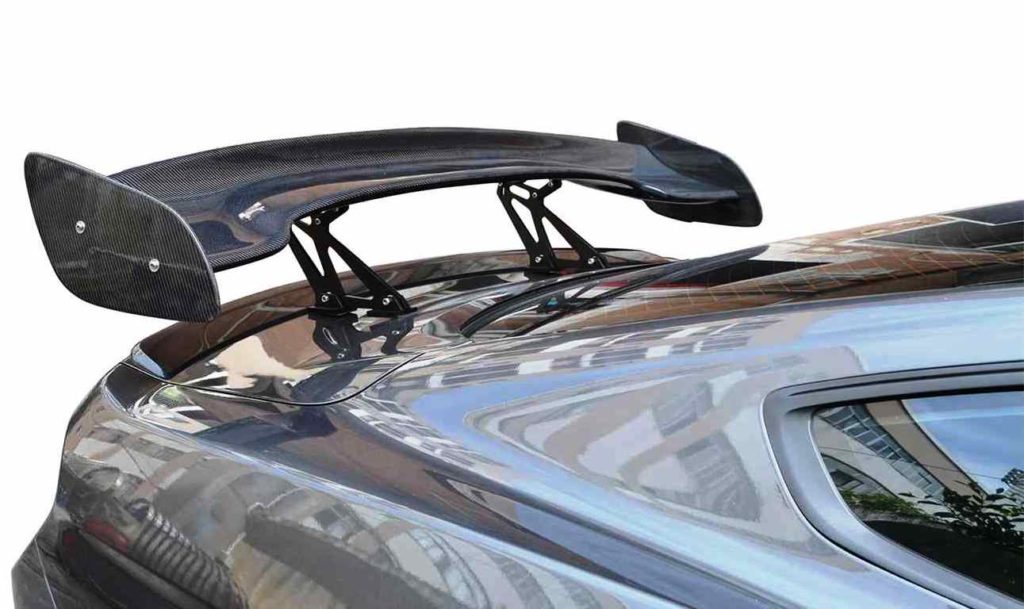What Does A Spoiler Do On A Car

Alright, let's dive into the world of spoilers – those often misunderstood appendages bolted onto cars. Beyond just looking cool, spoilers play a crucial role in vehicle aerodynamics, impacting handling, stability, and even fuel efficiency. This isn't just about fancy looks; it's about manipulating airflow to improve performance.
Purpose
Understanding spoiler function is critical for several reasons. If you're a DIY mechanic or enjoy modifying your car, knowing how a spoiler works helps you choose the right type for your needs. It's also invaluable when diagnosing handling problems. A damaged or improperly installed spoiler can negatively impact your car's performance, and understanding the principles involved allows for effective troubleshooting. Moreover, if you are contemplating adding a spoiler to your vehicle, this knowledge will prevent you from making purchases that won't perform as intended.
Key Specs and Main Parts
Let's break down the key components and technical aspects:
- Spoiler Profile: This refers to the shape of the spoiler, crucial for its aerodynamic effect. Common profiles include flat plates, airfoil shapes (similar to airplane wings), and ducktail designs. Each profile is designed to interact with airflow differently.
- Angle of Attack: This is the angle between the spoiler's surface and the oncoming airflow. A higher angle of attack generally creates more downforce but also increases drag.
- Chord Length: The distance from the leading edge (the front) to the trailing edge (the back) of the spoiler. A longer chord length generally increases the downforce generated.
- Mounting Points: The points where the spoiler attaches to the vehicle's body. These must be strong and secure to withstand the forces generated by airflow at high speeds.
- Material: Spoilers are typically made from materials like ABS plastic, fiberglass, carbon fiber, or aluminum. Each material offers different levels of strength, weight, and cost. Carbon fiber is generally the lightest and strongest but also the most expensive.
The main parts are fairly simple:
- The Spoiler Body: The main aerodynamic surface.
- Mounting Brackets: These attach the spoiler to the car.
- Hardware: Bolts, screws, and sometimes adhesive are used for secure attachment.
How It Works
The primary function of a spoiler is to reduce lift, the aerodynamic force that tends to raise a vehicle off the ground at high speeds. Lift is primarily generated by the airflow passing over the car's body. As air flows over the curved surface of the car, it has to travel a longer distance than the air flowing underneath. This increased distance means the air above moves faster, resulting in lower pressure (Bernoulli's principle). This pressure difference – lower pressure above and higher pressure below – creates lift.
A spoiler, especially a rear spoiler, disrupts this airflow. By strategically positioning a spoiler, you can manipulate the air to create a downward force, known as downforce. This downforce counteracts lift, increasing the car's grip on the road. More grip translates to improved handling, especially during cornering and braking.
Here's the breakdown:
- Airflow Disruption: The spoiler forces the air flowing over the rear of the car to change direction. This can create turbulence and reduce the pressure above the spoiler.
- Pressure Difference: The reduction in pressure above the spoiler, combined with the relatively higher pressure below it, generates a downward force.
- Increased Traction: This downward force presses the tires harder against the road surface, increasing friction and improving traction.
- Reduced Aerodynamic Drag (Sometimes): While the primary goal is downforce, some well-designed spoilers can also reduce aerodynamic drag by streamlining airflow at the rear of the vehicle. This is especially true for "ducktail" spoilers, which gently guide air off the back of the car. However, many aftermarket spoilers increase drag as a tradeoff for more downforce.
Real-World Use – Basic Troubleshooting Tips
If you suspect your spoiler is causing issues, here are some things to check:
- Loose Mounting: A wobbly spoiler is a sign of loose mounting hardware. This reduces its effectiveness and can even be dangerous at high speeds. Tighten the bolts or screws, and consider using thread locker to prevent them from loosening again.
- Damage: Cracks, dents, or breaks in the spoiler can significantly affect its aerodynamic performance. Small cracks can sometimes be repaired with fiberglass or epoxy, but major damage may require replacement.
- Improper Installation: An incorrectly installed spoiler can actually increase lift or create excessive drag. Ensure the spoiler is aligned correctly and that the angle of attack is appropriate for your car and driving conditions. If you installed it yourself, double-check the manufacturer's instructions.
- Increased Fuel Consumption: While some spoilers can improve fuel economy at certain speeds, many aftermarket spoilers increase drag. If you notice a significant drop in fuel efficiency after installing a spoiler, it may be contributing to excessive drag.
- Handling Issues: Unpredictable handling, especially at high speeds, can be a sign of an improperly functioning spoiler. This is especially true if the spoiler creates asymmetrical downforce, pulling the car to one side.
Safety
Working with spoilers involves several safety considerations:
- Secure Mounting: A spoiler that detaches at high speed is a serious hazard to yourself and other drivers. Always use high-quality mounting hardware and follow the manufacturer's instructions carefully.
- Material Handling: When working with fiberglass or carbon fiber, wear a respirator and gloves to avoid inhaling harmful particles or skin irritation.
- Sharp Edges: Some spoilers have sharp edges that can cause cuts. Wear gloves when handling them.
- Impact on Visibility: Large spoilers can obstruct your rearward vision. Ensure that the spoiler does not significantly impair your ability to see traffic behind you.
- Structural Integrity: Ensure the area where you plan to mount the spoiler is strong enough to handle the added force. Reinforcement may be needed for older or weaker vehicles. Consult with an automotive professional if unsure.
